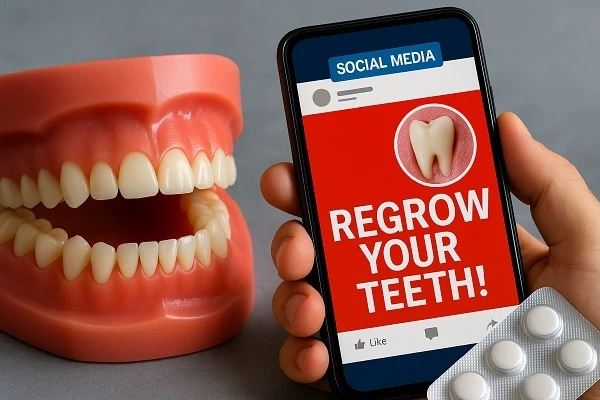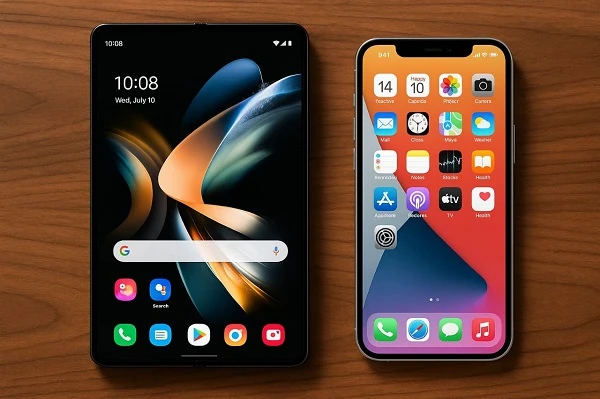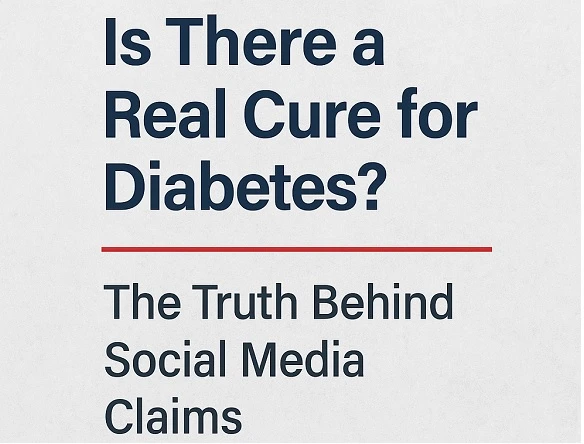Last Updated: July 2, 2025
Japan's Tooth Regrowth Breakthrough: What’s Real and What’s Just Hype?

Social media is ablaze with headlines like “Regrow Your Teeth with Just One Pill” or “Japan Has Invented a Cure for Tooth Loss” — and while they’re exciting, they’re also dangerously misleading. The truth is, Japan is indeed at the forefront of developing a tooth regrowth drug, but it’s not a miracle available on pharmacy shelves yet. Let’s separate the science from the sensationalism.
The Breakthrough: A Drug That May Regrow Human Teeth
Researchers at Kyoto University and Kitano Hospital in Japan are working on a drug that can stimulate the growth of teeth — a concept once considered purely science fiction. Their discovery focuses on a specific protein that suppresses tooth growth during embryonic development. By inhibiting this protein (called USAG-1), the body may reactivate dormant tooth-growing genes, even in adults.
In animal trials, mice and ferrets that had missing teeth began growing new ones after receiving the drug — a major step toward human application.
Where Things Stand in 2025
As of now, Japan is preparing for early-phase human clinical trials, with hopes to begin in mid-to-late 2025. The first trial group will include patients with congenital anodontia — a rare condition where individuals are born without certain teeth. This is a tightly controlled group and not a green light for general public use.
In short: The drug is real. But it’s not approved. Not available. And certainly not a magic pill for the masses — yet.
The Social Media Misfire
Videos and viral posts across TikTok, Facebook, and Twitter have claimed that you can “go to Japan and get your teeth back with one injection.” Some claim pharmacies are already distributing the drug. This is false.
🚫 What’s being claimed:
- “You can take a medicine and grow a full set of adult teeth.”
- “Japan already approved it.”
- “It works instantly and without side effects.”
✅ What’s actually true:
- The drug has shown promise in animal models.
- It is heading into human trials in 2025.
- It may take several years (at least until 2030) before it's available to the general public — if proven safe and effective.
Understanding the Timeline
Here’s a rough breakdown of how long this innovation may take before becoming a real treatment:
- 2024–2025: Final preclinical research and approval for human trials.
- 2025–2026: Phase 1 clinical trials begin in Japan (safety-focused).
- 2027–2028: Phase 2 and 3 trials (effectiveness + safety in larger populations).
- 2029–2030: Regulatory review, possible limited release in Japan.
- 2030+: Potential global consideration if trials are successful.
Each stage comes with risks. Even promising drugs sometimes fail in human trials or produce unexpected side effects that halt development altogether.
Can You Regrow Teeth Naturally Right Now?
Unfortunately, no. Current dental technologies still rely on prosthetics like implants, dentures, and bridges. While these are advancing rapidly, they do not involve biological tooth regeneration.
However, the Japanese team’s research is being hailed as one of the most promising efforts ever in this area, and may one day change the entire field of dentistry.
How to Stay Informed — Without Falling for Clickbait
Here are some tips to avoid misinformation:
- 🧠 Check for official sources — like peer-reviewed journals, clinical trial registries, or university press releases.
- 📆 Beware of posts with no dates or science references. Real research always has a timeline.
- 💬 Look for disclaimers — “In trials,” “under study,” and “not FDA approved” are critical signs of ongoing research.
The Bottom Line
The excitement over tooth regrowth is justified. If successful, this treatment could transform dentistry for millions who suffer from tooth loss. But as of 2025, it’s still experimental. Don’t fall for viral posts that suggest you can regrow teeth today — instead, keep an eye on Japan’s research as it unfolds. This could be the start of something revolutionary, just not instant.
Until then, floss and brush — the old-fashioned way still works best.
You May Also Like:

Foldable Phones Just Got Real: What Samsung’s Z Fold 6 Can Do That Your iPhone Can’t!...

Is There a Real Cure for Diabetes? The Truth Behind Social Media Claims...

Contabo vs Namecheap VPS: My Real Experience, Setup Time & The Best Cheap VPS Hosting in 2025...

Extreme Heat and Hailstorms: What's Happening and Why?...

Coco Gauff: The Youngest Face of Power and Poise in Modern Tennis...

Vivo FE Mini (X200 FE) — Full Specs, Features, and Detailed Review...

Buner Flood 2025: Full Story, Damages, Safety Tips, and Future Risks...

